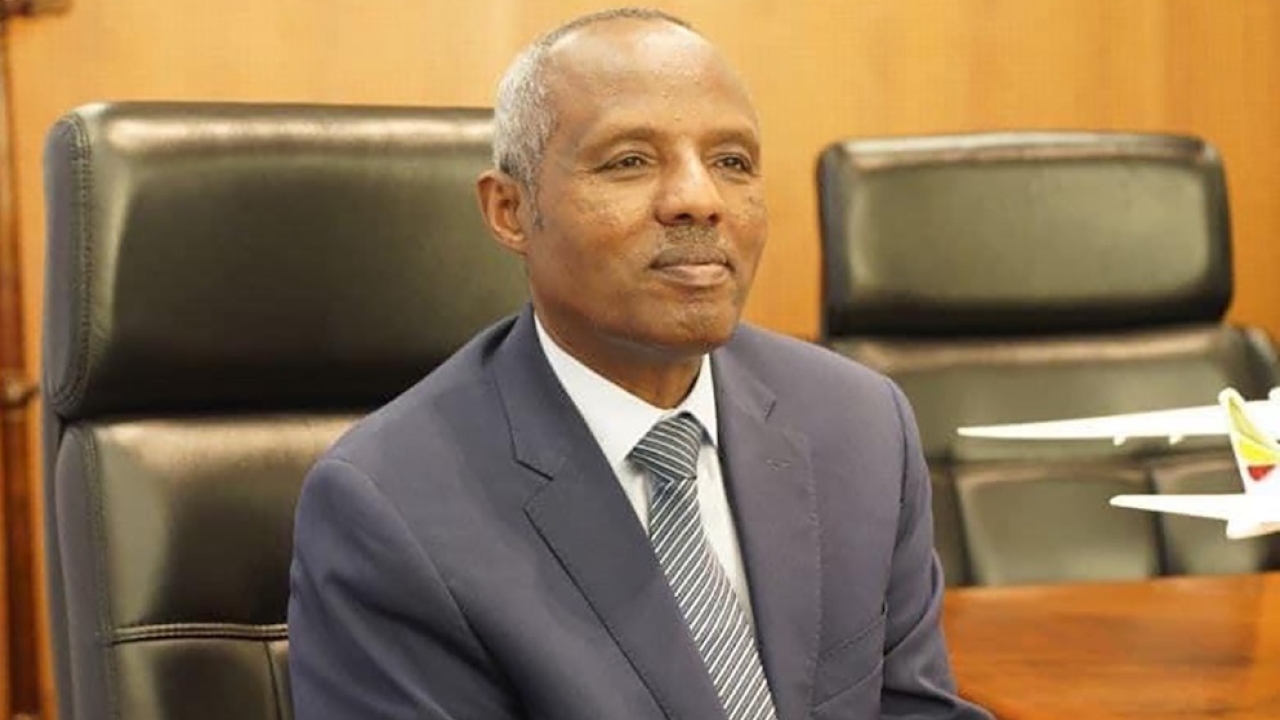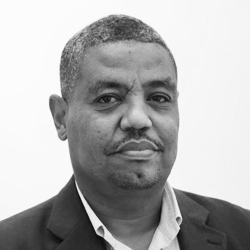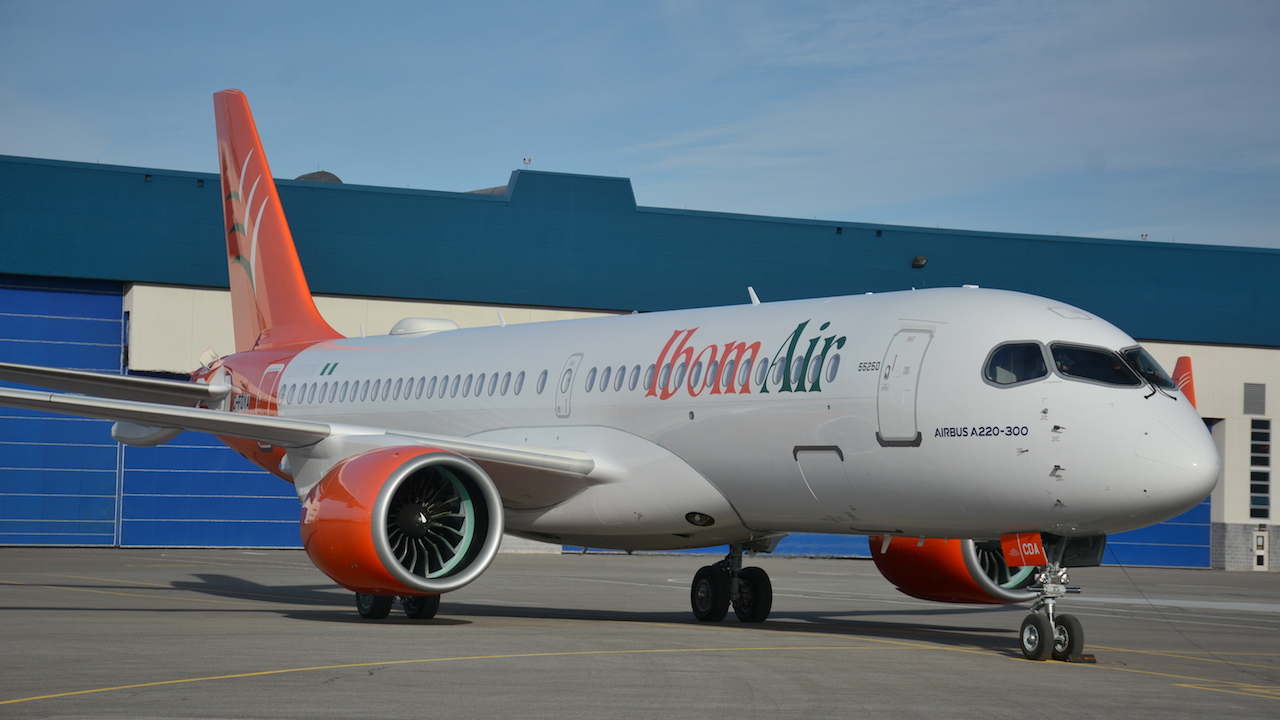Ethiopian's fleet path
The largest African aviation group, Ethiopian Airlines Group, has outlined an ambitious growth strategy dubbed “Vision 2035”. One of the five pillars of the growth roadmap is its fleet.

Mesfin Tasew: "This is a very ambitious growth plan." Picture: Kaleyesus Bekele
In the wake of the Covid-19 pandemic, Ethiopian has registered a remarkable performance. According to Mesfin Tasew, Ethiopian Airlines group CEO, in the 2022-2023 budget year the airline transported 13.89m passengers, 12% more than the pre-Covid level. In 2019 the airline transported 12.1m passengers.
“We have already exceeded the pre-Covid level in terms of the number of passengers we carried. When it comes to cargo, compared with the pre-Covid period, cargo transported during the year was 80% higher compared with the pre-Covid period,” Tasew said.
However, compared with the previous year (2021-2022) it showed a slight decline. Tasew attributes this to the decline in the global demand for air cargo transport.
In the year under review, Ethiopian generated a total of US$6.12bn revenue, 21% up from the previous year. “We can say it was a successful financial year,” Tasew said.
According to the CEO, the 2022-23 fiscal year was a year of recovery and growth for Ethiopian Airlines. “There were a number of challenges which happened in the industry that affected us. But we managed to successfully pass through them, recording a very good achievement,” he said.
Hefty fuel expense was one of the major challenges the airline faced in the fiscal year. The price of jet fuel went through the roof. “The fuel price remained high. It showed a slight improvement, but it is still high and it constituted close to 40% of our total operating costs,” Tasew said.
Shortage of spare parts is the other major challenge. In the aftermath of the Covid-19 pandemic, aircraft and engine manufacturers experienced a myriad of challenges in the supply chain that led to a shortage of parts and components. “It was a real challenge for the whole industry that has also affected us,” Tasew said.
The other challenge is the declining demand for air cargo transport. Tasew said the demand for air cargo was declining consistently throughout the year.
Ethiopian also had adverse weather conditions at its hub airport, the Addis Ababa Bole International Airport, which forced it to divert its flights to other airports.
“Though we had all these challenges, we achieved most of our targets and in some areas we achieved more than our plan,” Tasew commented.
Ethiopian added seven new international destinations to its network in the fiscal year. Atlanta, Zurich, Copenhagen, Aman, Chennai, Karachi, and Bulawayo are the new destinations the airline launched. “In addition we increased frequencies on our existing network. We were able to expand our network,” Tasew said.
The management of Ethiopian has set clear targets it wants to achieve by the year 2035. The airline plans to expand its international network to 209 from the current 134 destinations. The expanded network requires a total fleet of 271 aircraft of different size and models. At the moment the airline operates 144 aircraft comprising 32 Bombardier Q400s, 29 Boeing B787s, 19 B777s, 43 B737s, one B767 and 20 Airbus A350s.
The airline has 26 aircraft on order – four Airbus A350-1000s, 17 Boeing B737 MAX8s and five B777Fs to be delivered in the coming two years. In the 2022-2023 budget year the airline took delivery of 12 brand new aircraft – two from Airbus and 10 from Boeing.
Ethiopian plans to transport more than 60m passengers and three million tons of cargo and to generate US $25bn revenue by 2035. “This is a very ambitious growth plan,” Tasew proudly said.
According to Tasew, fleet is one of the major pillars of the Vision 2035 growth strategy. “To achieve our growth plan we need to have a modern, fuel-efficient and fit-for-purpose fleet,” he said.
Speaking of the Ethiopian widebody fleet, Tasew said the Airbus A350 and the Boeing B787 constitute the core fleet. For decades, Ethiopian operated only Boeing aircraft on its mid- and long-haul routes. But for the first time the airline introduced the first Airbus aircraft (A350s) into its fleet in June 2016.
“The A350-900s have been performing very well. They are very good aircraft. They have good ratability and comfortable cabins. Our passengers like them,” Tasew said. Ethiopian is currently operating 20 A350-900s and will take delivery of four A350-1000s in the next two years.
The Boeing B787s are also part of the Ethiopian core fleet. Currently, the national carrier is operating 19 B787-8s and 10 B787-9s. Ethiopian was one of the launch customers of the B787s. It was the third airline next to Japan Airlines and All Nippon Airways to operate the Dreamliner aircraft.
At the beginning there were some technical glitches that made the Dreamliner difficult to operate. “Initially there were several challenges related to the reliability of its systems and components. But over the years those systems and components have matured and the 787 has turned out to be a reliable aircraft,” Tasew said.
“The only issue that we have today is a shortage of the supply of spare parts on both the A350 and B787 fleets. We have very critical challenges with a few important components. It is a little bit more pronounced on the A350. “That is part of the global challenge with the supply chain of aircraft parts and components. It is related to the supply chain problems that occurred in the wake of the Covid pandemic,” he added.
In the turboprop category, the Bombardier Q400 is Ethiopian’s favourite aircraft. The airline operates 32 Q400s and its MRO centre is certified by Bombardier. “We use our Q400 fleet primarily to cover the domestic routes. We have an extensive domestic route operation in Ethiopia,” Tasew said.
There are 22 asphalted airports in the country. “We use our Q400s extensively within Ethiopia, but we also used them to fly to short destinations like Juba, Khartoum, Entebbe, and Dar es Salaam in East Africa. But as the traffic has increased they have been replaced by Boeing 737s on the regional routes. Now we use the Q400s mostly on domestic routes but we also fly them to some cities in neighbouring Somalia,” the CEO said.
Ethiopian has a bold plan to grow its fleet by acquiring 127 new aircraft by 2035. In the coming two to three years alone it will take delivery of 26 new aircraft – four A350-1000s, five B777Fs and 17 B737MAX8s.
“In addition, we are currently negotiating with aircraft manufacturers to place orders for our aircraft requirements in the coming 7-8 years,” Tasew said.
Ethiopian is phasing out its B767s, which constituted the core fleet before the introduction of the B787s to its fleet in 2012. It has converted two B767s into cargo at its own MRO centre. The two B767s have joined Ethiopian’s freighter fleet and are supporting its cargo operation. The third B767 is also being converted to cargo. “We are considering whether to convert some of the B777s to cargo,” Tasew said.
Ethiopian has 10 B777s (six B777-200LRs and four B777-300ERs) and nine B777Fs. “The B777-300ERs are leased and we will return them to the lessor in 2026-2027,” Tasew said. “We will replace the ageing B777-200LRs with the B787 or A350. We will capitalise on the B787 and A350. We may also introduce the B777X into our fleet.”
According to Tasew, his management team is evaluating the B777X and the A350-1000 in the 300-400 seat category.
In the regional jet category, Ethiopian is evaluating the Airbus A220 and Embraer E195. “Previously we had evaluated the 100-seater regional jets and we shortlisted two aircraft models, the Embraer E2 and the Airbus A220 as candidates.
But due to several considerations we wanted to wait and deferred our decision on that category. When we finish our 300-400 seater aircraft evaluation we will again move to the 100-seater aircraft evaluation,” Tasew said.
Regarding the turboprop fleet, Tasew said Ethiopian will keep the Q400s. “They are very good aircraft with commendable reliability and efficiency,” he added.
“We will be adding more aircraft depending on the demand. Fleet renewal is a dynamic process. We will continuously adjust the number of aircraft to be phased into our operation depending on the demand which is constantly changing,” he concluded.
Stay up to date
Subscribe to the free Times Aerospace newsletter and receive the latest content every week. We'll never share your email address.


